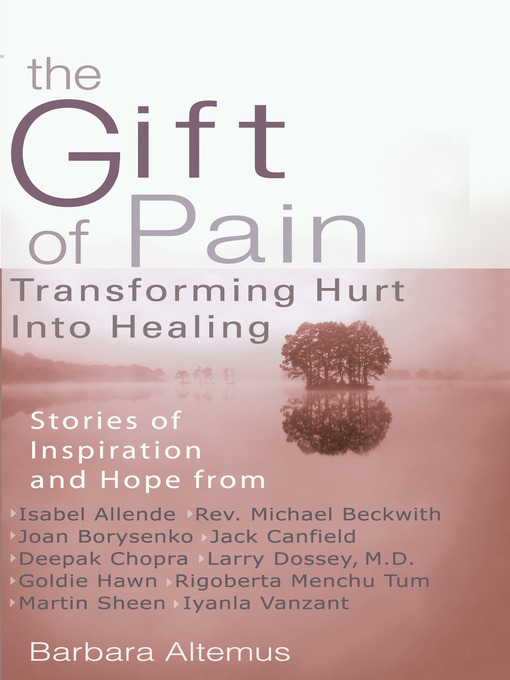
The Gift of Pain
کتاب های مرتبط
- اطلاعات
- نقد و بررسی
- دیدگاه کاربران
نقد و بررسی

May 15, 2003
Everyone lives with pain, uncertainty, and fear; it's what we do with it that matters, say these three authors. First-time author Altemus tracks the transformation of pain into healing (that "journey where we...discover how to become empowered and connected") through her own personal story and the stories of luminaries like Goldie Hawn, Martin Sheen, and Iyanla Vanzant. Though these accounts effectively illustrate small truths, e.g., "there is a distinction between vocation and career," they frequently ramble and overlap previously covered ground. Still, readers drawn to the process of healing will enjoy material aplenty (misery loves company?). Chapters are topically arranged: addiction, divorce, etc. Clarkson, a journalist at the Toronto Star, analyzes the physical, emotional, and mental aspects of fear, reminding us that "we still react to danger...the same way we have for more than a million years." Yet while our hard-wired capabilities were eminently useful for cave dwellers facing saber-toothed tigers, they don't work as well with contemporary hazards like threats to our egos and sports challenges. Unfortunately, Clarkson overintellectualizes a "system of fear" encompassing worry, anxiety, stress, and fear. Workmanlike writing aside, this lacks how-to, and the most interesting material comes from quoted experts. Consider instead Mihaly Csikszentmihalyi's Finding Flow: The Psychology of Engagement with Everyday Life, Hugh Prather's direct and fun The Little Book of Letting Go, and Thom Rutledge's considerate Embracing Fear. Jeffers (Feel the Fear and Do It Anyway) emphasizes ad nauseum that humans have absolutely no control over the future. At times bleakly fatalistic, she exhorts readers to modify any "soul-destroying" negative points of view regarding uncertainty, change, and control and instead embrace possibilities and "love the uncertainty of it all." The "Hoping Life" ("I hope I lost weight") is eschewed in favor of the "Wondering Life" ("I wonder if I lost weight"). While reducing stress by lessening one's attachment to outcome is noble, for this system to be effective it needs more practical examples and exercises. The scattered, unfocused approach presented here feels more like abandoning control than an empowering scheme. In place of any of the above, consider Pema Chodron and Emily Hilburn Sell's Comfortable with Uncertainty: 108 Teachings and Randall P. White and Philip Hodgson's Relax, It's Only Uncertainty: Lead the Way When the Way Is Changing. Forget Clarkson, order Jeffers on demand, and consider Altemus for large collections.
Copyright 2003 Library Journal, LLC Used with permission.

April 1, 2003
When it can't be avoided, pain--physical, emotional, spiritual, or psychological--often prompts such questions as Why me? Why now? Why this? When Altemus experienced pain in her life she had similar questions. As a healer and participant in the international peace movement, however, she sought deeper answers. She wanted to know whether pain in general had a purpose, and, if so, what is that purpose? By interviewing more than two dozen internationally known celebrities--the likes of Deepak Chopra, Isabel Allende, Goldie Hawn, and Dick Gregory--she learned that each of them had not only experienced profound individual pain but had also used pain as a stepping stone, a rung on the ladder of self-growth. As Allende says, "I have never changed out of joy. What forces me to change is something stressful, something very painful." Altemus interweaves stories of her own experiences with those of the world's visionaries, healers, and peacemakers as she explores and illustrates numerous ways in which resilient people can emerge better and stronger from debilitating experiences.(Reprinted with permission of Booklist, copyright 2003, American Library Association.)

























دیدگاه کاربران